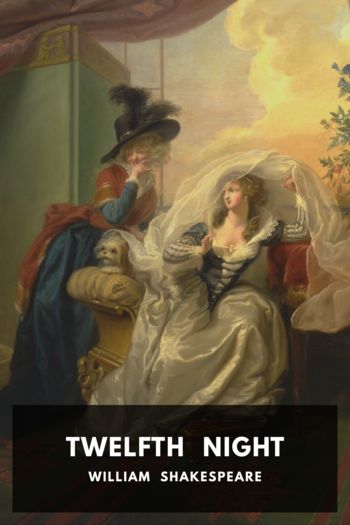
Description
A storm has caused a terrible shipwreck off the Illyrian coast. Two siblings, Viola and her brother Sebastian, become separated, each believing the other has drowned. Viola washes ashore and meets a friendly sea captain who offers to help her find work for Duke Orsino—but first she must disguise herself as a man named Cesario.
There is news that Duke Orsino is planning to propose to Countess Olivia. As Viola, disguised as Cesario, meets them both, a love triangle quickly forms. Shakespeare’s ability to weave love, confusion, mistaken identities, and joyful discovery shines through in this timeless romantic comedy.
This Standard Ebooks production is based on William George Clark and William Aldis Wright’s 1887 Victoria edition, which is taken from the Globe edition.
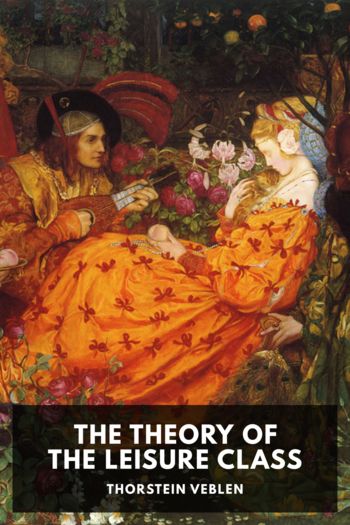
Description
1899 was the tail end of the Gilded Age, a time in America of rapid economic expansion that caused a select few to become ultra-wealthy, while millions of commoners struggled in abject poverty. It was against this backdrop that Veblen, an economist and sociologist at the University of Chicago, wrote The Theory of the Leisure Class, a book that brought the phrase “conspicuous consumption” into the modern vocabulary.
Veblen’s thesis centers on the definition of what he calls the “leisure class,” the upper social class consisting of wealthy individuals who are socially exempt from productive work. Their work instead becomes what he calls “conspicuous consumption”: spending their wealth in increasingly ostentatious ways in order to preserve their class status. Meanwhile, the lower and middle classes are the ones actually engaged in work that is productive to society—manufacturing and industry—with the goal of eventually being able to emulate the social status afforded by the conspicuous consumption of their leisure class masters.
Along the way, Veblen links these behaviors with social strictures left over from feudal society, arguing that contemporary human society has not evolved far beyond our medieval peasant-and-lord forefathers. In those ancient societies, productive labor came to be viewed as disreputable and dirty; thus, status is won not by accumulating wealth, but by displaying the evidence of wealth. He argues that many of what some would consider society’s ills are linked to this fundamental concept: for example, the mistreatment of women—forcing them into constricting clothing, preventing them from participating in independent economic life—is a way for their husbands to show off their unemployed status as a kind of conspicuous leisure; or society’s obsession with sports, celebrity, and organized religion, all forms of conspicuous leisure that bring no productive benefit to society, and on the contrary waste time and resources, but whose practitioners—superstars and clergy—maintain a high social status.
Though it was written over a hundred years ago when industrial society was just getting its footing, Veblen’s thesis predicts much of the social stratification we recognize today. Practical labor continues to be viewed as basically demeaning, while people struggle in vain to chase a glimmer of the vast wealth that celebrities, investors, bankers, hedge fund managers, and C-suite dwellers—the conspicuously-consuming leisure class of today—openly flaunt. As such, The Theory of the Leisure Class might be one of the most prescient and influential books of economic and social science of the 20th century.
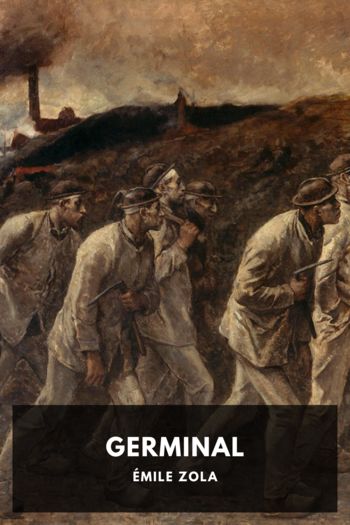
Description
Germinal, named after the spring month in the French Republican Calendar, is often considered to be Zola’s masterpiece. The book follows Étienne Lantier, a young man whose career as a railway worker is abruptly cut short after he attacks a superior. He arrives in Montsou, a coal mining town in the north of France, to begin a new life in a different industry. And the only industry around is mining coal.
Étienne quickly befriends the locals as he embraces his new life in the mines, but the abject poverty of the miners shocks him, and he soon begins reading about socialism. When the owners of the mine conspire to lower the miners’ wages, Étienne seizes the opportunity and convinces the town to strike.
Zola’s depiction of the mining town is shockingly bleak in its detail. He spent months researching the conditions of real-life miners, even going so far as pose as a government official so that he could descend into a mine personally. His encounter with a mining horse—brought underground as a foal to haul coal, never to see the light of day again—affected him so much that he wrote the animal into the plot. Montsou itself is a fully-realized town, with families and characters leading interconnected and nuanced lives across generations: lives so destitute, grueling, and filthy that Zola had to repeatedly defend his work against claims of hyperbole.
Ultimately, the novel was a rallying cry for the workers of the world in an era when communist and socialist ideas were beginning to spread amongst the impoverished working class. The shabby but good-hearted inhabitants of Montsou, so blatantly oppressed by the bourgeois mine owners, are a blank slate for workers of any industry to identify with, and identify they did: Germinal inspired socialist causes for decades after its publication, with crowds chanting “Germinal!” at Zola’s funeral.

Description
“Humbug … I won’t believe it,” is Scrooge’s response when confronted by the ghost of his dead partner Jacob Marley in A Christmas Carol, and just as surely as Dickens knows that ghosts are humbugs, so too does P. T. Barnum, writing a generation later. For Barnum, humbug begins in the Garden of Eden with the temptation of Eve, and permeates all of history, through every age and in every nation, right down to his own time, where the “Great Spirit Postmaster” publishes ghost letters from veterans recently perished in the Civil War.
Barnum himself was often called the “Prince of Humbugs,” but he was no cynic. In this book he sets out to make his fellow citizens a little wiser via a catalog of colorful characters and events, and mocking commentaries about how a sensible person should be more skeptical. He goes after all kinds of classic humbugs like ghosts, witches, and spiritualists, but he also calls humbug on shady investment schemes, hoaxes, swindlers, guerrilla marketers, and political dirty tricksters, before shining a light on the patent medicines of his day, impure foods, and adulterated drinks. As a raconteur, Barnum is conversational and avuncular, sharing the wisdom of his years and opening an intimate window into the New England of the mid-19th century.
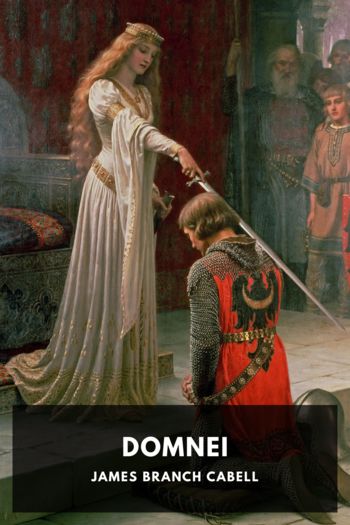
Description
Domnei by James Branch Cabell is the fourth installment in his Biography of the Life of Manuel series, which follows the lives of Dom Manuel and his descendants in the fictional French county of Poictesme.
It was initially published as The Soul of Melicent in 1913 under the erroneous advice of Cabell’s publisher, who suggested that the title would help sell more copies. But only 493 copies were sold of the original print run. In 1920 the book was republished as Domnei: A Comedy of Woman-Worship, Cabell’s original vision for the title.
The story follows Perion de la Forêt, fugitive leader of a mercenary troop, and his unbridled passion for his newly-wed and newly-distant lover, the Princess Melicent, daughter of Dom Manuel. The tale takes us to many locations in Middle-Ages Europe as we witness to what extent men will go to pursue a woman’s love.
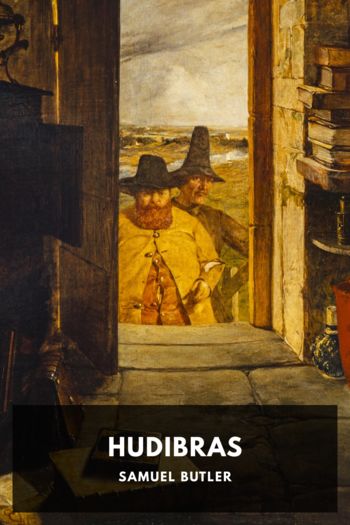
Description
The knight-errant Hudibras and his trusty (and somewhat more grounded) squire Ralph roam the land in search of adventure and love. Never the most congenial of partners, their constant arguments are Samuel Butler’s satire of the major issues of the day in late 17th century Britain, including the recent civil war, religious sectarianism, philosophy, astrology, and even the differing rights of women and men.
Butler had originally studied to be a lawyer (which explains some of the detail in the third part of Hudibras), but made a living variously as a clerk, part-time painter, and secretary before dedicating himself to writing in 1662. Hudibras was immediately popular on the release of its first part, and, like Don Quixote, even had an unauthorized second part available before Butler had finished the genuine one. Voltaire praised the humor, and although Samuel Pepys wasn’t immediately taken with the poem, it was such the rage that he noted in his diary that he’d repurchased it to see again what the fuss was about. Hudibras’s popularity did not fade for many years, and although some of the finer detail of 17th century talking points might be lost on the modern reader, the wit of the caricatures (and a large collection of endnotes) help bring this story to life.
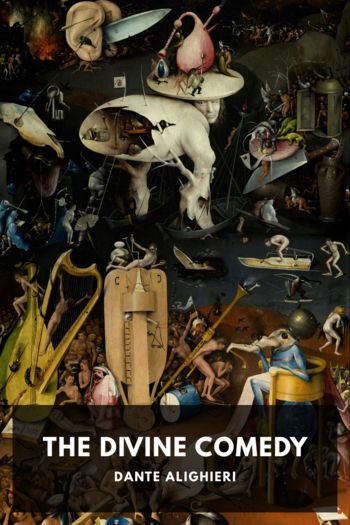
Description
Dante Alighieri’s Divine Comedy is considered one of the greatest works in world literature, and it established the standardized Italian language that is used today. Writing between 1308 and 1320, Dante draws from countless subjects including Roman Catholic theology and philosophy, the struggle between the papacy and the Holy Roman Empire, Greek mythology, and geocentric cosmology to answer the age-old question: what does the afterlife look like? Dante’s vision of the answer, this three-volume epic poem, describes in great detail the systematic levels in Hell, Purgatory, and Heaven.
The poem opens with Dante’s death—not his actual death that would come shortly after his work’s completion, but his fictional death—where the author is found wandering in a dark forest. Blocked from climbing towards the bright light by a she-wolf, a leopard, and a lion, he is forced to walk further into the darkened valley and towards the gates of Hell. Dante and his guides must then travel through the nine circles of Hell, seven terraces of Purgatory, and nine spheres of Heaven to experience divine justice for earthly sins so that he may reach the Empyrean and receive God’s love. On his journey, he will learn that one must be consciously devoted to the path of morality and righteousness, else one find oneself on a path towards sin.
This production is based on Henry Wadsworth Longfellow’s blank verse translation. Longfellow succeeds in capturing the original brilliance of Dante’s internal rhymes and hypnotic patterns while also retaining accuracy. It is said that the death of his young wife brought him closer to the melancholy spirit of Dante’s writing, which itself was shaped by his wounding exile from his beloved Florence in 1302.

Description
The Rainbow is an epic tale spanning three generations of Brangwens, a family of farmers living in Nottinghamshire around the time of the Industrial Revolution. The tale begins with Tom Brangwen, the very epitome of a rural English farmer leading the old way of life. We follow him as a youth easing in to the rhythm of rural existence. He soon falls in love with Lydia, a Polish immigrant he had hired as a housekeeper, and despite their vast cultural differences, the two marry. Their relationship is, in a word, satisfactory: the two face a language and culture barrier that prevents their minds from ever truly meeting, but they learn to be more or less content with their place in society and in raising their children.
Lydia’s child by her first marriage, Anna, becomes the focus of the next part of the novel. She was born in England, and has a fiery and demanding temperament. She falls in love with Will, a nephew of Tom, and the two begin a rocky and difficult marriage. Will, a craftsman and not a farmer, is self-absorbed, and wants nothing more than for them to live their lives only for each other. But Anna wants to strike out in the world and become a part of society. The two must reconcile their clashing personalities and desires as they raise their many children.
The oldest of their children, Ursula, becomes the focus of the last third—and perhaps most famous—part of the novel. Ursula is a deeply sensual being born in to the Victorian era, a time restrained in morality but exploding in energy and possibility, now worlds away from her grandfather Tom Brangwen’s quiet, traditional farming life. She leads a life unimaginable to her rural ancestors: indulging in travel abroad, waiting for marriage and pursuing her physical desires, and even taking on a career—a concept both new and frightening to her family, who are just a generation removed from the era when a woman’s life was led at home. Her unhappiness with the contradiction in this new unbridled way of living and the strict social mores of the era becomes the main theme of this last part of the book.
The entire novel takes a frank approach to sexuality and physical desire, with sex portrayed unashamedly as a natural, powerful, pleasurable, and desirable force in relationships. In fact Ursula’s story is the most famous part of the novel not just because of her unrestrained physicality and lust, but because she also experiments with a candidly-realized homosexual affair with one of her teachers. This unheard-of treatment of deeply taboo topics was poorly received by Lawrence’s Edwardian contemporaries, and the book quickly became the subject of an obscenity trial that resulted in over 1,000 copies being burned and the book being banned in the U.K. for eleven years.
Though its charged portrayal of sexuality is what the book is remembered for, sexuality is only one of the themes Lawrence treats. The novel stands solidly on its rich description of both rural and city life, its wide-angled view of change over generations, and its exploration of hope for the human spirit in societies that heave not gently but quickly and violently into new eras.

Description
Though Dorothy Day may be best known today for her religious peace activism and her role in founding the Catholic Worker movement, she lived a bohemian youth in the Lower West Side of New York City during the late 1910s and early 1920s. As an editor for radical socialist publications like The Liberator and The Masses, Day was involved in several left-wing causes as well as the Silent Sentinels’ 1917 protest for women’s suffrage in front of the White House.
The Eleventh Virgin is a semi-autobiographical novel told through the eyes of June Henreddy, a young radical journalist whose fictional life closely parallels Day’s own life experiences, including her eventual disillusionment with her bohemian lifestyle. Though later derided by Day as “a very bad book,” The Eleventh Virgin captures a vibrant image of New York’s radical counterculture in the early 20th century and sheds a light on the youthful misadventures of a woman who would eventually be praised by Pope Francis for her dream of “social justice and the rights of persons” during his historic address to a joint session of Congress in 2015.

Description
Helen Keller was just nineteen months old when, in 1882, she was struck with an illness that rendered her deaf, blind, and unable to communicate beyond basic signs. When she was seven, the arrival of Anne Sullivan, a partially blind teacher, catalysed Helen’s learning and created a completely new way of teaching deafblind children. In The Story of My Life, written when Helen was twenty-three, Helen recounts her childhood and the wonders of a blossoming understanding of the world around her, along with her efforts to become the first deafblind person to earn a B.A. degree.
This volume also contains many of her letters, and is substantiated by Anne Sullivan’s own writing and correspondence on Helen’s tuition, along with numerous other accounts. The story was later adapted for both theater and film on multiple occasions as The Miracle Worker, a title bestowed on Anne Sullivan by Mark Twain.

Description
A storm has caused a terrible shipwreck off the Illyrian coast. Two siblings, Viola and her brother Sebastian, become separated, each believing the other has drowned. Viola washes ashore and meets a friendly sea captain who offers to help her find work for Duke Orsino—but first she must disguise herself as a man named Cesario.
There is news that Duke Orsino is planning to propose to Countess Olivia. As Viola, disguised as Cesario, meets them both, a love triangle quickly forms. Shakespeare’s ability to weave love, confusion, mistaken identities, and joyful discovery shines through in this timeless romantic comedy.
This Standard Ebooks production is based on William George Clark and William Aldis Wright’s 1887 Victoria edition, which is taken from the Globe edition.

Description
1899 was the tail end of the Gilded Age, a time in America of rapid economic expansion that caused a select few to become ultra-wealthy, while millions of commoners struggled in abject poverty. It was against this backdrop that Veblen, an economist and sociologist at the University of Chicago, wrote The Theory of the Leisure Class, a book that brought the phrase “conspicuous consumption” into the modern vocabulary.
Veblen’s thesis centers on the definition of what he calls the “leisure class,” the upper social class consisting of wealthy individuals who are socially exempt from productive work. Their work instead becomes what he calls “conspicuous consumption”: spending their wealth in increasingly ostentatious ways in order to preserve their class status. Meanwhile, the lower and middle classes are the ones actually engaged in work that is productive to society—manufacturing and industry—with the goal of eventually being able to emulate the social status afforded by the conspicuous consumption of their leisure class masters.
Along the way, Veblen links these behaviors with social strictures left over from feudal society, arguing that contemporary human society has not evolved far beyond our medieval peasant-and-lord forefathers. In those ancient societies, productive labor came to be viewed as disreputable and dirty; thus, status is won not by accumulating wealth, but by displaying the evidence of wealth. He argues that many of what some would consider society’s ills are linked to this fundamental concept: for example, the mistreatment of women—forcing them into constricting clothing, preventing them from participating in independent economic life—is a way for their husbands to show off their unemployed status as a kind of conspicuous leisure; or society’s obsession with sports, celebrity, and organized religion, all forms of conspicuous leisure that bring no productive benefit to society, and on the contrary waste time and resources, but whose practitioners—superstars and clergy—maintain a high social status.
Though it was written over a hundred years ago when industrial society was just getting its footing, Veblen’s thesis predicts much of the social stratification we recognize today. Practical labor continues to be viewed as basically demeaning, while people struggle in vain to chase a glimmer of the vast wealth that celebrities, investors, bankers, hedge fund managers, and C-suite dwellers—the conspicuously-consuming leisure class of today—openly flaunt. As such, The Theory of the Leisure Class might be one of the most prescient and influential books of economic and social science of the 20th century.

Description
Germinal, named after the spring month in the French Republican Calendar, is often considered to be Zola’s masterpiece. The book follows Étienne Lantier, a young man whose career as a railway worker is abruptly cut short after he attacks a superior. He arrives in Montsou, a coal mining town in the north of France, to begin a new life in a different industry. And the only industry around is mining coal.
Étienne quickly befriends the locals as he embraces his new life in the mines, but the abject poverty of the miners shocks him, and he soon begins reading about socialism. When the owners of the mine conspire to lower the miners’ wages, Étienne seizes the opportunity and convinces the town to strike.
Zola’s depiction of the mining town is shockingly bleak in its detail. He spent months researching the conditions of real-life miners, even going so far as pose as a government official so that he could descend into a mine personally. His encounter with a mining horse—brought underground as a foal to haul coal, never to see the light of day again—affected him so much that he wrote the animal into the plot. Montsou itself is a fully-realized town, with families and characters leading interconnected and nuanced lives across generations: lives so destitute, grueling, and filthy that Zola had to repeatedly defend his work against claims of hyperbole.
Ultimately, the novel was a rallying cry for the workers of the world in an era when communist and socialist ideas were beginning to spread amongst the impoverished working class. The shabby but good-hearted inhabitants of Montsou, so blatantly oppressed by the bourgeois mine owners, are a blank slate for workers of any industry to identify with, and identify they did: Germinal inspired socialist causes for decades after its publication, with crowds chanting “Germinal!” at Zola’s funeral.

Description
“Humbug … I won’t believe it,” is Scrooge’s response when confronted by the ghost of his dead partner Jacob Marley in A Christmas Carol, and just as surely as Dickens knows that ghosts are humbugs, so too does P. T. Barnum, writing a generation later. For Barnum, humbug begins in the Garden of Eden with the temptation of Eve, and permeates all of history, through every age and in every nation, right down to his own time, where the “Great Spirit Postmaster” publishes ghost letters from veterans recently perished in the Civil War.
Barnum himself was often called the “Prince of Humbugs,” but he was no cynic. In this book he sets out to make his fellow citizens a little wiser via a catalog of colorful characters and events, and mocking commentaries about how a sensible person should be more skeptical. He goes after all kinds of classic humbugs like ghosts, witches, and spiritualists, but he also calls humbug on shady investment schemes, hoaxes, swindlers, guerrilla marketers, and political dirty tricksters, before shining a light on the patent medicines of his day, impure foods, and adulterated drinks. As a raconteur, Barnum is conversational and avuncular, sharing the wisdom of his years and opening an intimate window into the New England of the mid-19th century.

Description
Domnei by James Branch Cabell is the fourth installment in his Biography of the Life of Manuel series, which follows the lives of Dom Manuel and his descendants in the fictional French county of Poictesme.
It was initially published as The Soul of Melicent in 1913 under the erroneous advice of Cabell’s publisher, who suggested that the title would help sell more copies. But only 493 copies were sold of the original print run. In 1920 the book was republished as Domnei: A Comedy of Woman-Worship, Cabell’s original vision for the title.
The story follows Perion de la Forêt, fugitive leader of a mercenary troop, and his unbridled passion for his newly-wed and newly-distant lover, the Princess Melicent, daughter of Dom Manuel. The tale takes us to many locations in Middle-Ages Europe as we witness to what extent men will go to pursue a woman’s love.

Description
The knight-errant Hudibras and his trusty (and somewhat more grounded) squire Ralph roam the land in search of adventure and love. Never the most congenial of partners, their constant arguments are Samuel Butler’s satire of the major issues of the day in late 17th century Britain, including the recent civil war, religious sectarianism, philosophy, astrology, and even the differing rights of women and men.
Butler had originally studied to be a lawyer (which explains some of the detail in the third part of Hudibras), but made a living variously as a clerk, part-time painter, and secretary before dedicating himself to writing in 1662. Hudibras was immediately popular on the release of its first part, and, like Don Quixote, even had an unauthorized second part available before Butler had finished the genuine one. Voltaire praised the humor, and although Samuel Pepys wasn’t immediately taken with the poem, it was such the rage that he noted in his diary that he’d repurchased it to see again what the fuss was about. Hudibras’s popularity did not fade for many years, and although some of the finer detail of 17th century talking points might be lost on the modern reader, the wit of the caricatures (and a large collection of endnotes) help bring this story to life.

Description
Dante Alighieri’s Divine Comedy is considered one of the greatest works in world literature, and it established the standardized Italian language that is used today. Writing between 1308 and 1320, Dante draws from countless subjects including Roman Catholic theology and philosophy, the struggle between the papacy and the Holy Roman Empire, Greek mythology, and geocentric cosmology to answer the age-old question: what does the afterlife look like? Dante’s vision of the answer, this three-volume epic poem, describes in great detail the systematic levels in Hell, Purgatory, and Heaven.
The poem opens with Dante’s death—not his actual death that would come shortly after his work’s completion, but his fictional death—where the author is found wandering in a dark forest. Blocked from climbing towards the bright light by a she-wolf, a leopard, and a lion, he is forced to walk further into the darkened valley and towards the gates of Hell. Dante and his guides must then travel through the nine circles of Hell, seven terraces of Purgatory, and nine spheres of Heaven to experience divine justice for earthly sins so that he may reach the Empyrean and receive God’s love. On his journey, he will learn that one must be consciously devoted to the path of morality and righteousness, else one find oneself on a path towards sin.
This production is based on Henry Wadsworth Longfellow’s blank verse translation. Longfellow succeeds in capturing the original brilliance of Dante’s internal rhymes and hypnotic patterns while also retaining accuracy. It is said that the death of his young wife brought him closer to the melancholy spirit of Dante’s writing, which itself was shaped by his wounding exile from his beloved Florence in 1302.

Description
The Rainbow is an epic tale spanning three generations of Brangwens, a family of farmers living in Nottinghamshire around the time of the Industrial Revolution. The tale begins with Tom Brangwen, the very epitome of a rural English farmer leading the old way of life. We follow him as a youth easing in to the rhythm of rural existence. He soon falls in love with Lydia, a Polish immigrant he had hired as a housekeeper, and despite their vast cultural differences, the two marry. Their relationship is, in a word, satisfactory: the two face a language and culture barrier that prevents their minds from ever truly meeting, but they learn to be more or less content with their place in society and in raising their children.
Lydia’s child by her first marriage, Anna, becomes the focus of the next part of the novel. She was born in England, and has a fiery and demanding temperament. She falls in love with Will, a nephew of Tom, and the two begin a rocky and difficult marriage. Will, a craftsman and not a farmer, is self-absorbed, and wants nothing more than for them to live their lives only for each other. But Anna wants to strike out in the world and become a part of society. The two must reconcile their clashing personalities and desires as they raise their many children.
The oldest of their children, Ursula, becomes the focus of the last third—and perhaps most famous—part of the novel. Ursula is a deeply sensual being born in to the Victorian era, a time restrained in morality but exploding in energy and possibility, now worlds away from her grandfather Tom Brangwen’s quiet, traditional farming life. She leads a life unimaginable to her rural ancestors: indulging in travel abroad, waiting for marriage and pursuing her physical desires, and even taking on a career—a concept both new and frightening to her family, who are just a generation removed from the era when a woman’s life was led at home. Her unhappiness with the contradiction in this new unbridled way of living and the strict social mores of the era becomes the main theme of this last part of the book.
The entire novel takes a frank approach to sexuality and physical desire, with sex portrayed unashamedly as a natural, powerful, pleasurable, and desirable force in relationships. In fact Ursula’s story is the most famous part of the novel not just because of her unrestrained physicality and lust, but because she also experiments with a candidly-realized homosexual affair with one of her teachers. This unheard-of treatment of deeply taboo topics was poorly received by Lawrence’s Edwardian contemporaries, and the book quickly became the subject of an obscenity trial that resulted in over 1,000 copies being burned and the book being banned in the U.K. for eleven years.
Though its charged portrayal of sexuality is what the book is remembered for, sexuality is only one of the themes Lawrence treats. The novel stands solidly on its rich description of both rural and city life, its wide-angled view of change over generations, and its exploration of hope for the human spirit in societies that heave not gently but quickly and violently into new eras.

Description
Though Dorothy Day may be best known today for her religious peace activism and her role in founding the Catholic Worker movement, she lived a bohemian youth in the Lower West Side of New York City during the late 1910s and early 1920s. As an editor for radical socialist publications like The Liberator and The Masses, Day was involved in several left-wing causes as well as the Silent Sentinels’ 1917 protest for women’s suffrage in front of the White House.
The Eleventh Virgin is a semi-autobiographical novel told through the eyes of June Henreddy, a young radical journalist whose fictional life closely parallels Day’s own life experiences, including her eventual disillusionment with her bohemian lifestyle. Though later derided by Day as “a very bad book,” The Eleventh Virgin captures a vibrant image of New York’s radical counterculture in the early 20th century and sheds a light on the youthful misadventures of a woman who would eventually be praised by Pope Francis for her dream of “social justice and the rights of persons” during his historic address to a joint session of Congress in 2015.

Description
Helen Keller was just nineteen months old when, in 1882, she was struck with an illness that rendered her deaf, blind, and unable to communicate beyond basic signs. When she was seven, the arrival of Anne Sullivan, a partially blind teacher, catalysed Helen’s learning and created a completely new way of teaching deafblind children. In The Story of My Life, written when Helen was twenty-three, Helen recounts her childhood and the wonders of a blossoming understanding of the world around her, along with her efforts to become the first deafblind person to earn a B.A. degree.
This volume also contains many of her letters, and is substantiated by Anne Sullivan’s own writing and correspondence on Helen’s tuition, along with numerous other accounts. The story was later adapted for both theater and film on multiple occasions as The Miracle Worker, a title bestowed on Anne Sullivan by Mark Twain.